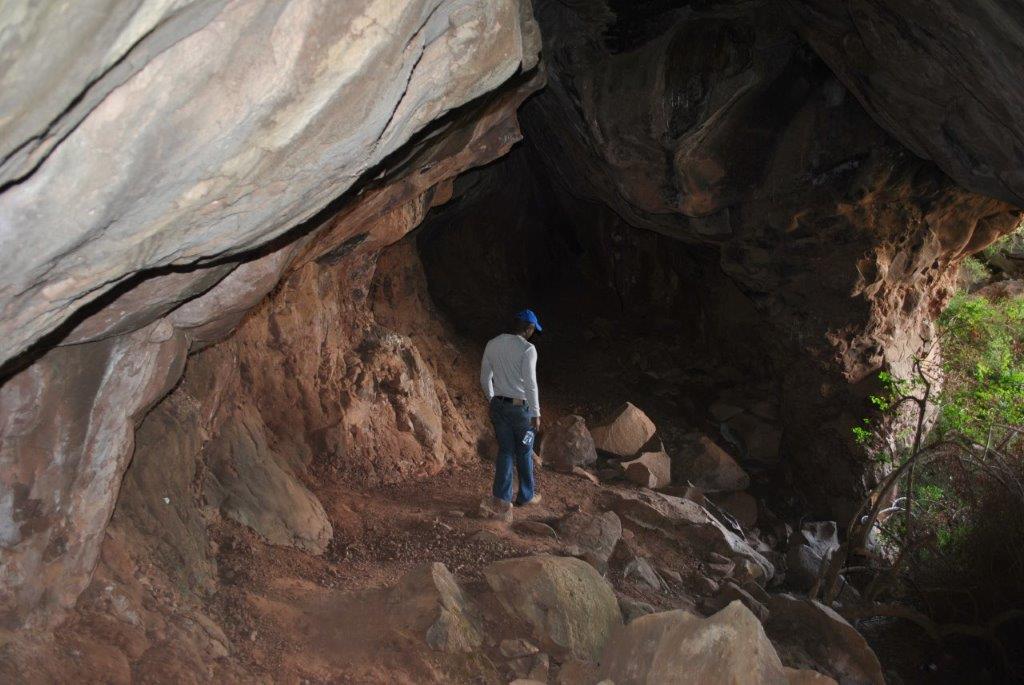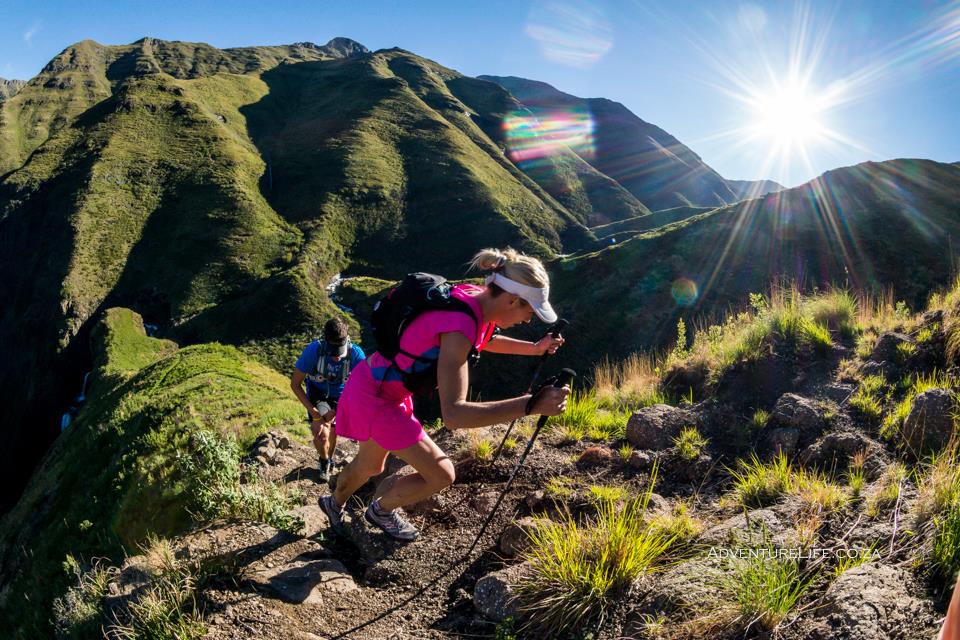The fossils of two reptiles, Dicynodont and Lystrosaurus, occur repeatedly in the Beaufort rocks. Their presence in these sediments tells of widespread marshy conditions. Trirachodon, a mammal-like reptile, survived harsh conditions by burrowing. The remains of these burrows were preserved in the red rocks of the upper Beaufort Group. Above this, in the Molteno Formation, fossilized ferns are found.
Around 200 million years ago the water supply from the mountains diminished and the region became far less hospitable. The silt was carried down the rivers into the marshes, but there was much less water – resulting in the red rocks of the Elliot Formation. As the climate became drier still, the whole area was covered by sand dunes, still visible today in the yellow sandstone of the Clarens Formation. The fossil record shows, however, that many animals still inhabited the region, including two dinosaurs, Massospondylus and Lesothosaurus.
Fossils of Massospondylus have been found throughout the region. This was a bird-like reptile approximately six meters long which lived near water and laid eggs in the sand – much as crocodiles do today. One of the most dramatic fossil finds was a cluster of six eggs found in the Golden Gate Highlands National Park by Professor James Kitching in 1978. Just as the Massospondylus babies were about to hatch they must have been buried by a sandstorm. They are believed to be the oldest known fossilized embryos in the world.
Lesothosaurus, a small meat-eating dinosaur, was better adapted to this desert. Its fossilized remains are mostly from Lesotho. Also living in the region throughout this period was a shrew-like creature, Megazostrodon, considered one of the earliest mammals. Its burrows and fossilized remains are found occasionally in the Elliot and Clarens rocks.
SUBENG :
There are three types of dinosaur footprints at this place namely LESOTHOSOAROUS, SUBENGSAROUS AND PENTASAROUS dinosaurs. Fossilized worm trails and mud cracks on the other slabs in the riverbed can also be found here – what is still visible and evident is the stone bone fossils of Lesothosaurous. These were discovered by a herd boy in a nearby village.
TSIKOANE :
Here there is just one type of dinosaur footprint which is Lesothosarous, differing by the size of the footprint. There are so many footprints, where evidence proves that many dinosaurs had once lived here. These footprints can be found on the roof of the cave, called under the ceiling.
FOSSIL WOOD :
This is fossils of the tree which retains original cells of wood, they are formed when trees buried rapidly in try cold or hot environments. There are some tree fossils protected at st denis mission, there are about types tree found here, these fossils have been collected from different areas around the mission some are collected near subeng village at another side of Mahobong area.










No Comments